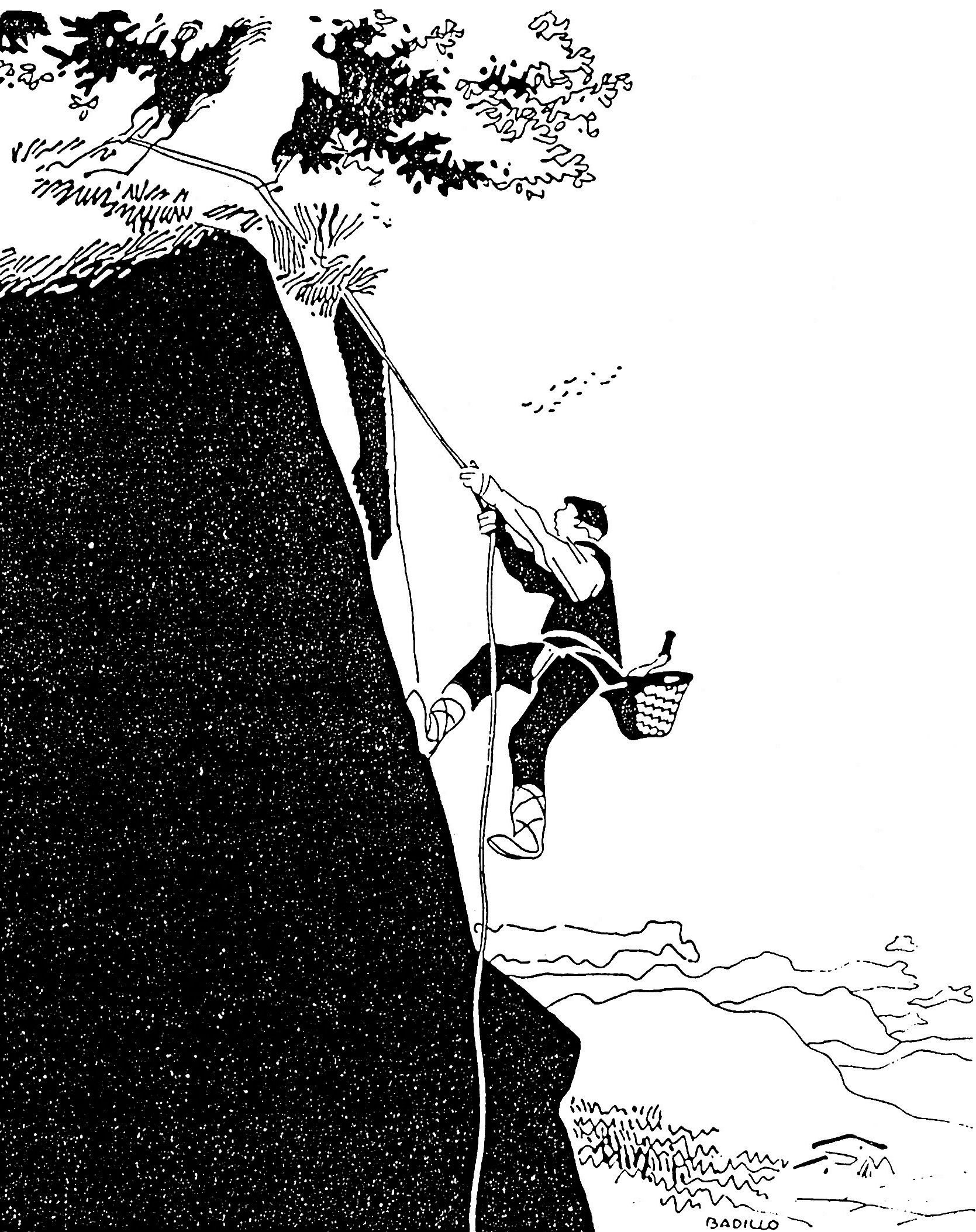Basque ethnography at a glance
The tradition of collecting honey from combs —known as tástanas or tástanos— made by wild bees in caves and rock crevices was widespread in areas of the district of Las Encartaciones in Bizkaia.
Towards the end of the 19th century, the local writer Antonio de Trueba gave an account of this practice in the folk tale titled “Cata-ovales”. It includes the depiction of a man from the neighbourhood of Labaluga (Sopuerta) harvesting beehives in crevices of Peña la Miel, a rocky escarpment located in the vicinity of the neighbourhood of Labarrieta (Sopuerta). Having tied one end of a rope to a holm oak planted on the edge of the cliff and the other to his body, he descended with a small basket or piricacho held around his waist with the sash and a sickle inside it. Suspended over where the hives jutted out of the wall, he managed to fill the basket with the best out of the honey in the combs by hooking and pulling with the sickle despite the stings of the bees.
The predation of honeycombs from wild beehives in the limestones of Sopeña (Carranza) took place later on, in the late 40s and early 50s of the 20th century, by folk from Carranza and Trucíos, for it was found to be the location of one of several cavities, namely that known as Cueva los Enjambres —Cave of the Hives—, where honey flowed in abundance down the rocky wall.
Around that time, two valley men from Paules and Santecilla, climbed down the mentioned cave to gather the honey of the bees. Years ago in the neighbourhood of Santecilla, they used to say that as their fellow man reaped the benefits of the wild beehives, those holding the rope he was tied to yelled: “Send up some honeycomb!”, to which he replied while braving the bees: “Whoever wants honey must use the pick”.
A neighbour of Cueto (Trucíos) made his way down to the cave on a rope held by fellow folk who accompanied him. He carried a zinc container and a sac full of animal droppings wound with wire to set fire to and make smoke. He could not get but some comb because of the ferocity of the bees, he recounted.
According to the latest reports on wild honey harvest in the rock outcrops of Sopeña dated from 1965, two neighbours of Las Torcachas and Paules (Carranza) climbed up to an opening in the rock, situated below the site known as Aseladero de los Buitres —Perch of Vultures—, close to Cueva los Enjambres. Equipped with a beekeeping mask and their hands protected with socks, and undeterred by the aggressiveness of the bees, they filled a 23-litre container by poking a stick into the small hole flowing with honey in the roof of the cavity.
Miguel Sabino Díaz – Etniker Bizkaia – Etniker Euskalerria Groups
Translated by Jaione Bilbao – Language Department – Labayru Fundazioa
Reference for further information: Family Diet, part of the Ethnographic Atlas of the Basque Country collection.



